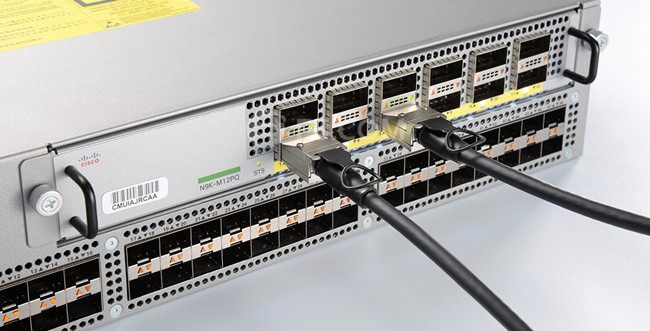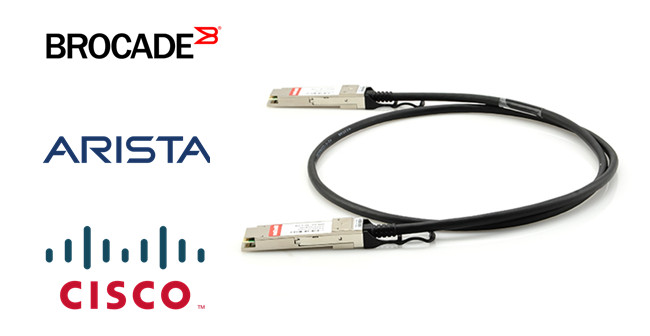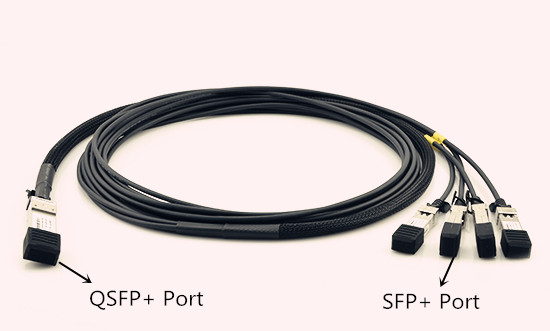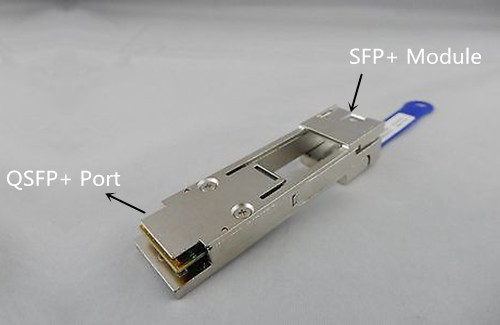To achieve a 40G network connection, we usually use QSFP+ transceiver modules and MTP patch cords, which can help transmit 150 m to 40 km. But, if we only need to connect within 10 m, we can use QSFP+ direct-attach twinax copper cables. It’s a high-speed, cost-effective alternative to QSFP+ fiber optics. What’s QSFP+ direct-attach copper (DAC)? Whether should I use it? This blog will introduce the knowledge of QSFP+ DAC to you.
What Is QSFP+ Direct-Attach Twinax Copper Cable?
QSFP+ DAC is also called QSFP+ to QSFP+ cable. It has a QSFP+ module at one end and another QSFP+ module at the other end, and uses integrated duplex serial data links for bidirectional communication. Used to connect the 40 Gbps QSFP+ port of a switch at one end to another QSFP+ port of a switch at the other end, it can provide high quality of 40G end-to-end connection. Usually, maximum transmission distance of QSFP+ DAC is 10 m, which makes these cables are suitable for in-rack connections between servers and Top-of-Rack (ToR) switches. Besides, since its price ($30-$200) is much lower than QSFP+ optics, it’s a more cost-effective option to connect within racks and across adjacent racks.

Passive vs Active QSFP+ DAC
QSFP+ direct-attach twinax copper cable comes in either an active or passive twinax (twinaxial) and connects directly into a QSFP+ housing. An active twinax cable has active electronic components in the QSFP+ housing to improve the signal quality. A passive twinax cable is mainly just a straight “wire” and contains few components. Generally, twinax cables shorter than 5 meters are passive and those longer than 5 meters are active, but this may vary from vendor to vendor. QSFP+ direct-attach copper is a popular choice for 40G Ethernet reaches up to 10 m due to low latency and low cost.
Popular QSFP+ Cable Overview
At present, major QSFP+ DAC vendors are Brocade, Arista and Cisco. We can use QSFP+ DAC in their hardware with QSFP+ interfaces. Although the transmission distance of QSFP+ DAC can reach 10 m, the most common types we use are 1 m, 3 m, and 5m. In the market, popular QSFP+ DAC includes Brocade 1m(40G-QSFP-C-0101) , 3m(40G-QSFP-C-0301) and 5m(40G-QSFP-C-0501) passive QSFP+ twinax copper, Arista 1m(CAB-Q-Q-1M) and 3m(CAB-Q-Q-3M) passive QSFP+ twinax copper, and Cisco 1m(QSFP-H40G-CU1M) and 3m(QSFP-H40G-CU3M) passive QSFP+ twinax copper.

Conclusion
40 Gbps Direct-Attached QSFP+ to QSFP+ Copper Cables (1 m, 3 m, 5 m) are optimized to fully leverage 40 Gigabit Ethernet (GbE) switches and routers. FS.COM provides a wide range of QSFP+ cable assembly options for your network connection, which satisfies the need for ultra-thin, light-weight, highly flexible cabling solutions for use in high density intra-rack applications.
Related Article: 40G QSFP+ Direct Attach Copper Cabling



